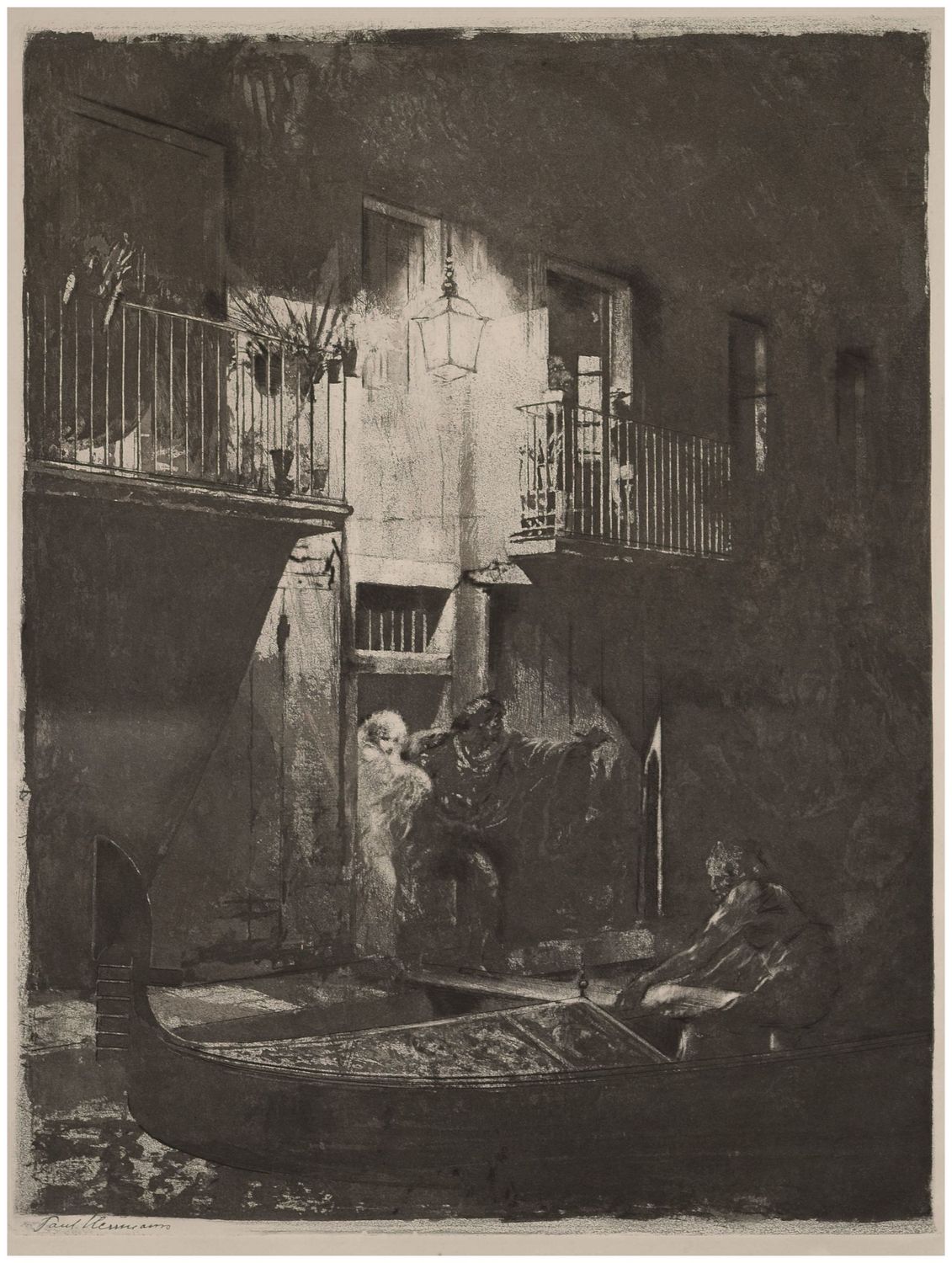Herrmann, Paul (1864-1946), Nocturnal kidnapping in Venice, 1934
Paul Herrmann(1864 Munich - 1946 Berlin), Nocturnal kidnapping in Venice , 1934. Aquatint etching on paper with watermark, 37.5 cm x 29 cm (plate size), 53 cm x 42 cm (sheet size), signed lower left in the print.
- the wide margin with small tears, creases and darkened, the image slightly wavy due to the printing process, slightly foxed on the reverse
- The path of innocence -
In the darkness of night, a figure in black drags a young woman from a house while an accomplice places a makeshift footbridge on the shore, enabling a quick and unseen escape. A bright lamp illuminates the scene, bathing the young woman in light and turning her into a figure of light. She symbolizes untouched innocence. She seems reluctant yet willing to go along, prompting the imagination to paint a story that is both eerie and amorous. At the same time, the depiction is a metaphor for nocturnal transgressions of desire.
About the artist
Paul Hermann was the nephew of writer Paul Heye. After taking his first lessons at Max Ebersberger's painting school in Munich, Hermann worked as a fresco restorer and panorama painter from 1880 onward. After studying at the Munich Academy of Fine Arts and the School of Arts and Crafts, Hermann moved to Chicago, where he helped design frescoes for the 1893 World's Fair. In 1895, Hermann moved to Paris, where he worked as a caricaturist for the satirical magazine Le Rire and adopted the name Henri Héran. There, he met Henri de Toulouse-Lautrec and became friends with Edvard Munch, August Strindberg, and Oscar Wilde. Munch painted his portraits and Herrmann modeled for him several times. In 1906, Herrmann moved to Berlin, where he painted frescoes for the Hotel Adlon and other prestigious buildings. Meanwhile, Herrmann was primarily active as a graphic artist. To celebrate his 50th birthday, Hans Wolfgang Singer published a catalogue raisonné of 183 works. That same year, he won the gold medal at the Leipzig World Exhibition of Decorative Arts and Prints. He experimented with various printmaking techniques, including sandblowing, mezzotint on zinc, and vernis mou. He combined woodcuts with lithography for the magazines Le Centaure and Pan. Later, drypoint etching and mezzotint on nickel tin became his preferred techniques. During the National Socialist era, Herrmann was a member of the Reich Chamber of Fine Arts and participated in the Great German Art Exhibitions from 1937 to 1944. Herrmann also worked for Albert Speer, who arranged for him to be placed on the Gottbegnadeten list in 1944, exempting him from military service.

